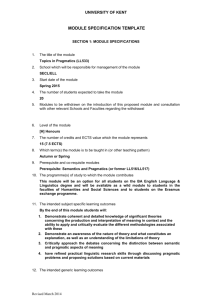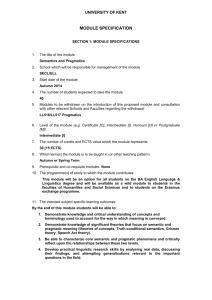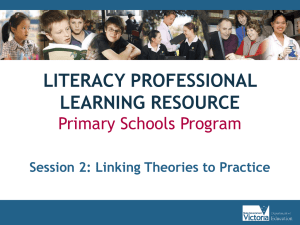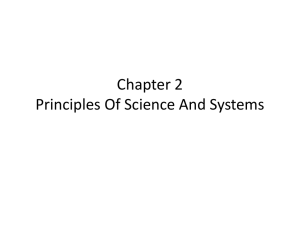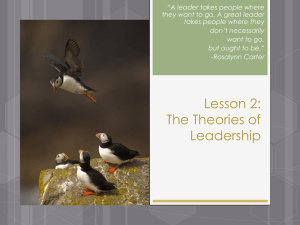2. theories
advertisement
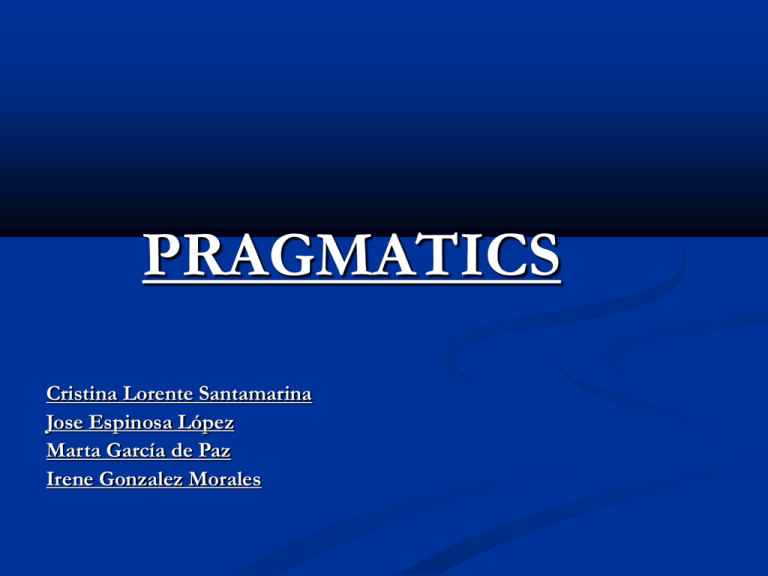
PRAGMATICS Cristina Lorente Santamarina Jose Espinosa López Marta García de Paz Irene Gonzalez Morales OUTLINE INTRODUCTION Definition Aims & Purposes 2. THEORIES 2.1. Speech acts theory 2.2. Relevance theory 2.3. Cooperation theory 2.4. Argumentation theory OUTLINE 3. PRAGMATIC ANALISYS 3.1. Related to the situation 3.2. Related to the context 3.3. Related to the people 3.4. Related to the information 4. SUMMARY DEFINITION Pragmatics is a subfield of linguistics It studies how the use of language is based on the relationship established between utterance, context and interlocutors. (Baena, E. 2002) OBJECTIVES & PURPOSES Why have we chosen PRAGMATICS? Common un everyday life Wide subject to be studied Comes out of language study OBJECTIVES & PURPOSES EXAMPLES OBJECTIVES & PURPOSES EXAMPLES 2. THEORIES SPEECH ACTS THEORY Words do not have meaning by themselves. (Searle, J.R. ; Kiefer, F. & Bierwisch, M. 1980) 2. THEORIES Speech acts can be analysed by three levels - - Locutionary act Perlocutionary act Ilocutionary act 2. THEORIES LOCUTIONARY ACT The performance of an utterance Semantic and sintactic aspects 2. THEORIES EXAMPLE ‘CLOSE THE WINDOW’ 2. THEORIES ILLOCUTIONARY ACT Real intended meaning EXAMPLE: The person who is talking is cold 2. THEORIES PERLOCUTIONARY ACT It’s actual effect EXAMPLE: The action of closing the window 2. THEORIES 2. THEORIES RELEVANCE THEORY The meaning of a concept is the subtotal of its impication for possible observations and actions. 2. THEORIES COOPERATION THEORY The way in which people try to make conversations work. 2. THEORIES There are four subprinciples within this theory called maxims Quantity. (quantity of information) Quality (be truthful) Relevance/Relation (be relevance) Manner (be clear) 2. THEORIES ARGUMENTATION THEORY Interdisciplinary study of how humans do reach conclusions through logical reasoning 3. PRAGMATIC ANALYSIS 3.1 RELATED TO THE SITUATION We adapt our conversation to different situations, depending on the place and the time where the speech occurs. 3. PRAGMATIC ANALYSIS 3.2 RELATED TO THE PEOPLE Depending on who you are with and the relation between those people, the conversation will have different meaning. Example: Ironic utterances with friends and with unknown people. 3. PRAGMATIC ANALYSIS 3.3 RELATED TO THE CONTEXT Within the people, there are clues in the context that allow us to notice that irony (to say the opposite of what it actually means) Example: Facial expressions. 3. PRAGMATIC ANALYSIS 3.4 RELATED TO THE INFORMATION Presuppositions about the world-knowledge of hearers; i.e meanings that can be deducted by listeners because they already know about that information. 4. SUMMARY Pragmatics as an important factor when it comes to understanding the language in a deeply way as words do not have meaning by themselves. REFERENCES Searle, J.R. ; Kiefer, F. & Bierwisch, M. (1980). Speech act theory and Pragmatics. Dordnecht; Holland. Baena, E. ; Lacorte, M. (2002). Para entender la Pragmática. Ed. Gredos. Yulen, G. (1996). Pragmatics. Oxford: University Press. http://en.wikipedia.org/wiki/Main_Page http://www.helsinki.fi/~pietarin/publications/Relevance%20theor y-Pietarinen.pdf

